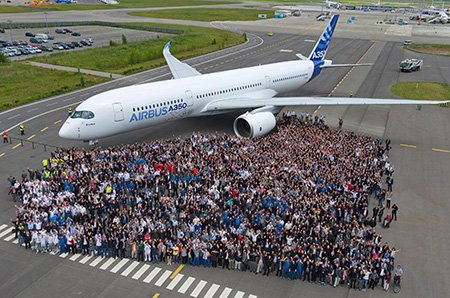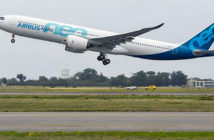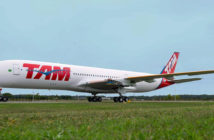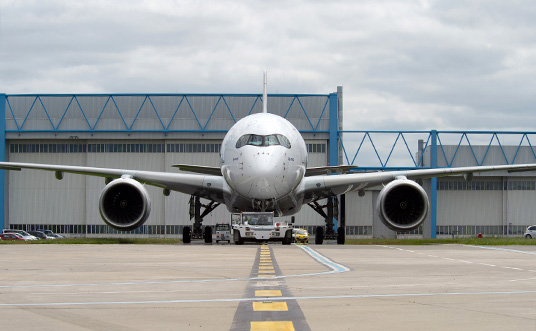
The Airbus A350XWB prototype pictured during its roll-out at Toulouse-Blagnac in late May 2013. The very large size of the two new Rolls-Royce Trent XWB turbofans is conspicuous in this head-on view. This airliner will compete directly with the Boeing 787 Dreamliner. ©Airbus
Rolls-Royce’s Trent XWB engines have run for the first time on the first and prototype A350 XWB (MSN1) following the start-up of the Auxiliary Power Unit (APU), as part of the preparations for the aircraft’s maiden flight.Combined with the A350 XWB’s lightweight structure and advanced aerodynamics, these latest generation engines with their exceptionally low fuel consumption help cut fuel burn by 25% compared to previous generation competing long-range twins.
The A350 XWB is the newest mid-size long range Airbus airliner comprising three versions and seating between 270 and 350 passengers in typical three-class layouts. The new family will bring a step change in efficiency compared with existing aircraft in this size category, using 25 per cent less fuel and providing an equivalent reduction in CO2 emissions. Scheduled for entry-into-service in second half of 2014, the A350 XWB has already won 616 firm orders from 34 customers worldwide.
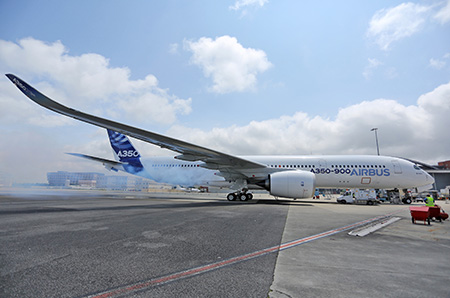
Airbus A350XWB MSN0001 during first engine run-up. The white smoke that comes out of the engines during the first run of any engine is a normal occurrence following any period of storage. The smoke is generated when residual inhibiting fluid (used to protect key components during storage) burns. This is a common to all engine manufacturers. Once the inhibiting fluid has cleared the engine will be smoke-free and continue normal operation without smoke. ©Airbus
Each Rolls-Royce Trent XWB-84 engine is capable of delivering 84,000 lbs thrust contributing to the outstanding economics of this aircraft. This brand new engine will offer lower fuel burn and lower emissions for improved economics and reduced environmental impact thanks to its latest technology.The engine with its 118in diameter fan has been selected for its reduced emissions and low noise characteristics, making it community friendly and compliant with current and upcoming regulations. The Trent XWB has already close to 4.400 hours of extensive testing as well as in 75 flights with more than 250 flight hours on the A380 Flying Test Bed since its first take-off in February 2012. On 7th February 2013, the Trent XWB received its EASA certification.
Maiden flight of the A350XWB is expected by mid-June. In time to be celebrated publicly at the 50th Paris Air Show starting on this 17 June.

